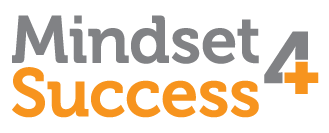The Power of Feedback
How do you react when someone says to you ‘I want to give you some feedback’? The chances are you take a short intake of breath and think ‘what’s coming, what are the negatives’.
Well the good news is, it isn’t your fault to think like this.
Our brains are always scanning the environment for threats and any feedback that compromises our safety in terms of our connections to others, is viewed as a threat.
Most people are familiar with the ‘feedback sandwich’. Feedback starts with a positive shortly followed by a ‘but’ and then finished with some more positives. Guess what the brain remembers? You guessed it, the ‘but’. We are five times more likely to remember the negative in any situation because of the brain’s need to keep us safe, hence the fight or flight response to fear.
So, what does this mean for giving feedback because we all know it is useful to know our strengths and development needs. If we continue to use the feedback sandwich, the chances are our employees, customers will only remember the ‘threat (but)’ and therefore cortisol, the stress hormone will start to coarse through the body. This means that our employees and customers will not feel motivated to change and will probably spend a lot of time mulling over, how they can have revenge and defend their actions.
Giving feedback is a gift.
I know it seems ‘trite’ to say this. However, if we take the time to view feedback as an opportunity to praise someone for their contribution and behaviour, we can enhance their confidence and their performance. When it comes to giving feedback that requires change, I recommend you use the following language:
‘A behaviour that you might want to work on or improve is ….., this way the language is positive and the word ‘might’ suggests ‘choice’. It’s up to the person to decide if they want to change. The brain will view this as an opportunity rather than a threat.
We all need to receive feedback to help with our ongoing learning and without it, we risk becoming stagnant and possibly ignorant of how our behaviour and actions might be coming across.
Another way to view feedback is, ‘there is no such thing as failure, only learning’ and to learn, you need to receive feedback so you know what’s working and what needs working on.
The key focus on giving feedback is to ensure that what you deliver is based on ‘fact’ and not assumptions. What did the person ‘SAY and DO’ that you want to give feedback about. This is highly valuable because it removes bias when feedback is purely based on fact. People will not get defensive about what you say if you deliver on their ‘Say/Do’ behaviour.
In summary, reframe feedback as an opportunity for learning whether you are giving or receiving feedback. Without learning, you cannot move forward, improve and take on new challenges.

